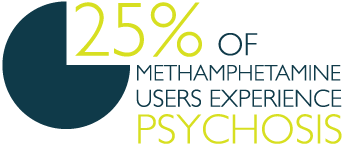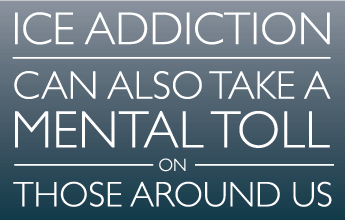Ice Age
Since the Federal Government launched a national taskforce last year, the drug ‘ice’ continues to make headlines. But there has been little discussion on the mental health implications of the drug. Harry Easton speaks to David Peters, who has a first-hand account of the mental health implications of ice.
If you’ve been an avid watcher of the news these past 12 months, you would think Australia had descended into some sort of ‘ice’ age. The Federal Government is continually pushing its radical campaign to halt what it describes as one of the biggest epidemics in Australia.
In August last year, former Prime Minister Tony Abbott described it as “the worst drug scourge Australia has faced.” In November, the National Ice Taskforce released its Final Report and noted that the integral role of social networks in distributing ice have begun to “normalise” the drug [1].
Ice is the crystalline form of methamphetamine. The chemical structure is similar to ‘meth’ but ice differs in its strength and purity. The increased attention around the drug would suggest that ice use has spiked in the last few years, however those with personal experience don’t believe this is the case.
David Peters has worked with Arafmi since 2013. As a former ice user, he is one of the key people behind the organisation’s plan to commission a report into the effects ice is having on the carers of substances users. He believes the hype surrounding ice could be misleading people about the real statistics.

Research released in February from the Australian Medical Journal predicts that ice use is increasing though. The report estimates that during 2013–14 there were 268 000 regular methamphetamine users and 160 000 dependent users aged 15–54 years in Australia. [2]
The mental health implications of ice have gone relatively unnoticed during the campaign. The National Ice Taskforce’s final report stresses there is no definitive causation link between ice use and mental health issues [3].
However, ice can have drastic psychological impacts, as users can experience psychotic episodes. According to the National Drug and Alcohol Research Centre almost one quarter of regular methamphetamine users will experience a symptom of psychosis in any given year [4]. David describes psychosis as a difficult state to imagine.
“It’s very hard to explain to be honest. Psychosis can lead to confusion, severe sadness, depression and anxiety. For me I felt like I was seeing things in clarity. There may be 100 people out the window and you know they’re not there, but they are there but you’re calm about it. I think the danger is that you can experience all this stuff but you don’t feel a sense of fear. I think if there was a lot of fear involved in the psychosis than it would be something you would try to avoid.”
Since he became clean, David has experienced mental health issues, which he believes were masked by his ice use.
“In my sobriety, a lot of my mental health issues have come out that were maybe always there and masked by ice. I’ve been told that this is rather common in people [who come off ice]. So my anxiety has come to the surface… and the depressive moods do come out as well.”
David says that ice addiction can also take a mental toll on those around us. His family suffered greatly due to his ice use.

He says there wasn’t a lot of support for his family when he was an ice user, and believes that carers are greatly under-represented. Through his work with Arafmi, he is trying to change that.
“We’re creating a Drug and Alcohol Peak Advisory committee. The aim is to look at what drugs problems are out there in society… namely how those drugs problems impact on the carers, the families and friends of those that are affected by drug use.”
The Federal Government is planning to allocate $300 million to help fund the National Ice Taskforce’s recommendations [5]. These include supporting ice-affected families and communities by implementing education and support services, as well as increasing efforts to reduce ice demand and disrupt trafficking. Although the Australian public has now had increased media exposure to the effects of ice, education on the mental health consequences of the drug is lacking.
“I don’t think it would hurt to include mental health in the negative implication that ice has”, says David. “I’ve seen ads where it says it does this and that to your body and your friends, but I think it would be a good step to include mental health as well.”
Written By
Harry Easton
[1] https://www.dpmc.gov.au/sites/default/files/publications/national_ice_taskforce_final_report.pdf
[2] https://www.mja.com.au/journal/2016/204/4/estimating-number-regular-and-dependent-methamphetamine-users-australia-2002-2014
[3] https://www.dpmc.gov.au/sites/default/files/publications/national_ice_taskforce_final_report.pdf
[4] https://ndarc.med.unsw.edu.au/sites/default/files/ndarc/resources/ICE%20PSYCHOSIS.pdf
[5] http://www.abc.net.au/news/2015-12-06/malcolm-turnbull-ice-addiction-strategy/7005246
Newsletter
Stay up to date
Sign up to our Mind Reader newsletter for monthly mental health news, information and updates.
